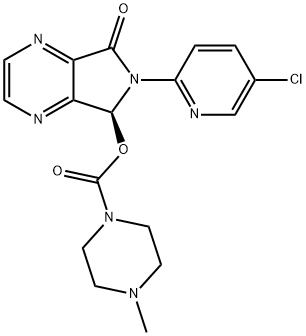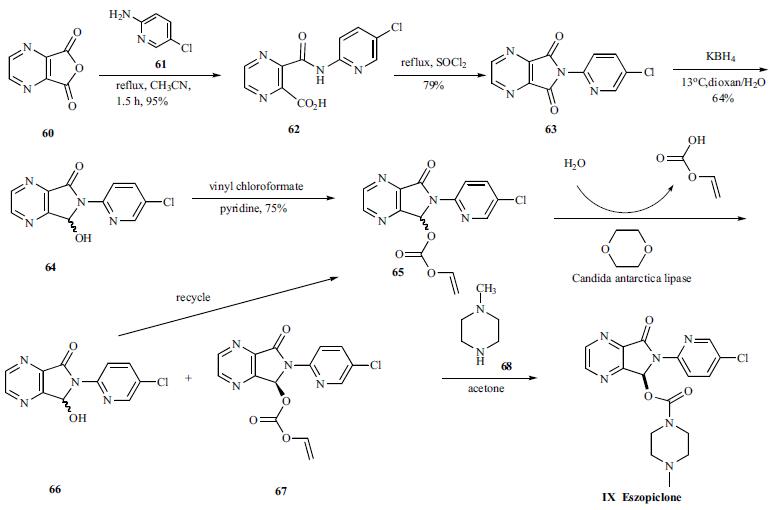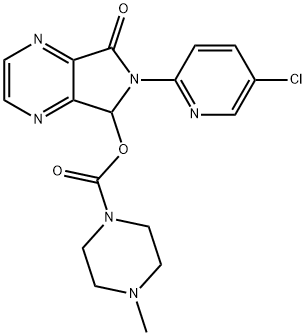
Eszopiclone
- Product NameEszopiclone
- CAS138729-47-2
- CBNumberCB1468825
- MFC17H17ClN6O3
- MW388.81
- EINECS202-303-5
- MDL NumberMFCD03700720
- MOL File138729-47-2.mol
Chemical Properties
| Melting point | 202-204°C |
| alpha | D20 +135 ±3° (c = 1.0 in acetone) |
| Boiling point | 580.7±50.0 °C(Predicted) |
| Density | 1.54±0.1 g/cm3(Predicted) |
| storage temp. | -20°C Freezer |
| solubility | Chloroform (Slightly, Heated), Methanol (Slightly, Heated) |
| form | Solid |
| pka | 6.70±0.10(Predicted) |
| color | White to Light Beige |
| InChI | InChI=1S/C17H17ClN6O3/c1-22-6-8-23(9-7-22)17(26)27-16-14-13(19-4-5-20-14)15(25)24(16)12-3-2-11(18)10-21-12/h2-5,10,16H,6-9H2,1H3/t16-/m0/s1 |
| InChIKey | GBBSUAFBMRNDJC-INIZCTEOSA-N |
| SMILES | N1(C(O[C@H]2C3=NC=CN=C3C(=O)N2C2=NC=C(Cl)C=C2)=O)CCN(C)CC1 |
| CAS DataBase Reference | 138729-47-2(CAS DataBase Reference) |
| FDA UNII | UZX80K71OE |
| NCI Drug Dictionary | eszopiclone |
| ATC code | N05CF04 |
| UNSPSC Code | 41116107 |
Safety
| Symbol(GHS) |
 
|
| Signal word | Warning |
| Hazard statements | H361-H315-H335-H319-H302+H312+H332 |
| Precautionary statements | P264-P280-P305+P351+P338-P337+P313P-P201-P202-P281-P308+P313-P405-P501-P264-P280-P302+P352-P321-P332+P313-P362 |
| Hazard Codes | Xn |
| Risk Statements | 20/21/22-36/37/38-62 |
| Safety Statements | 26-36 |
| HS Code | 2933790002 |
| Hazardous Substances Data | 138729-47-2(Hazardous Substances Data) |

